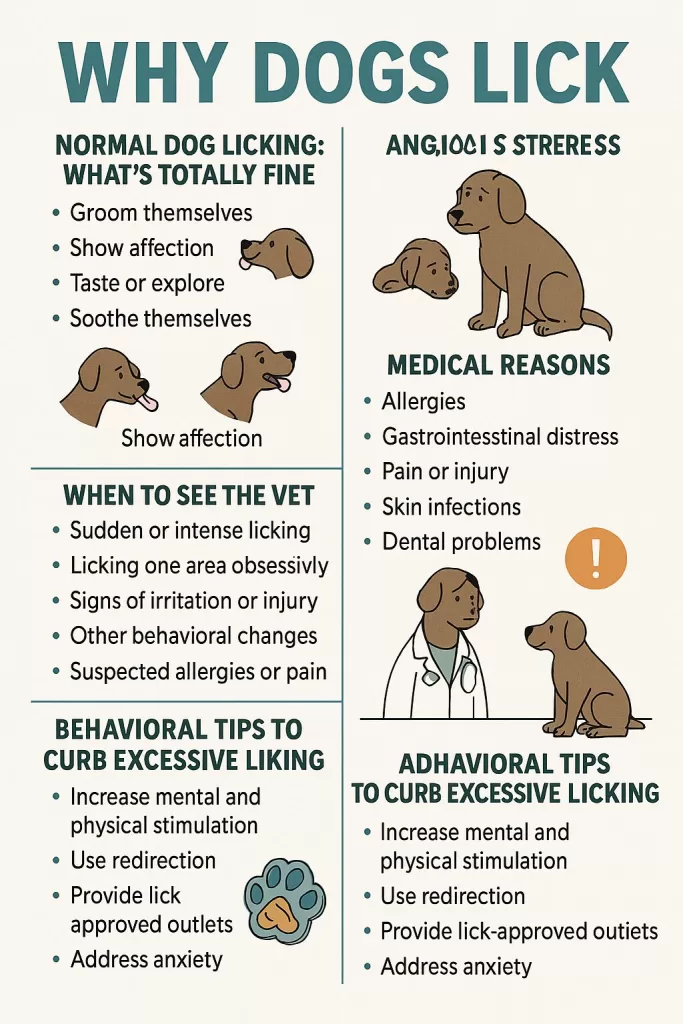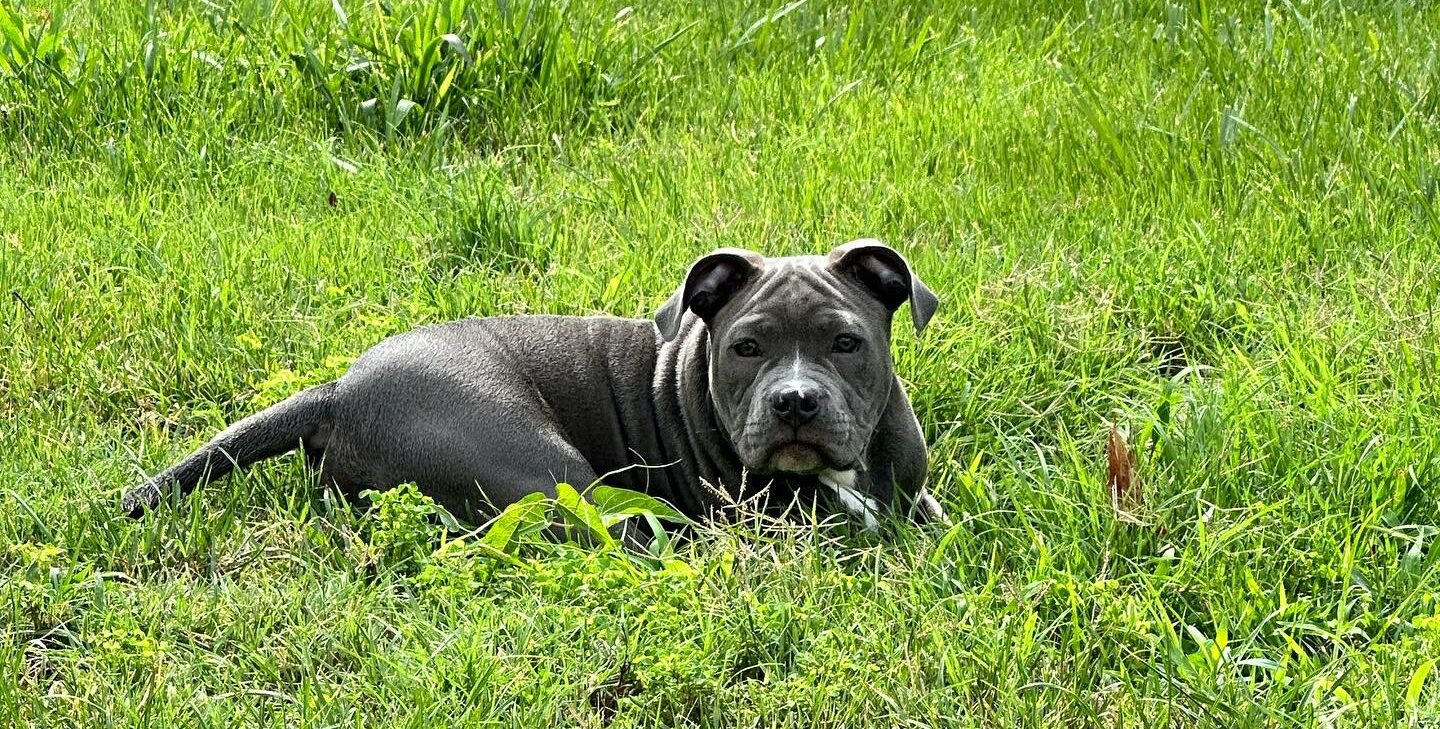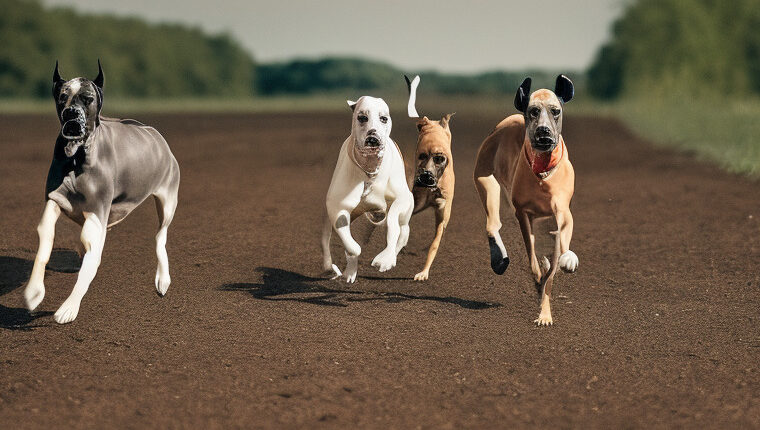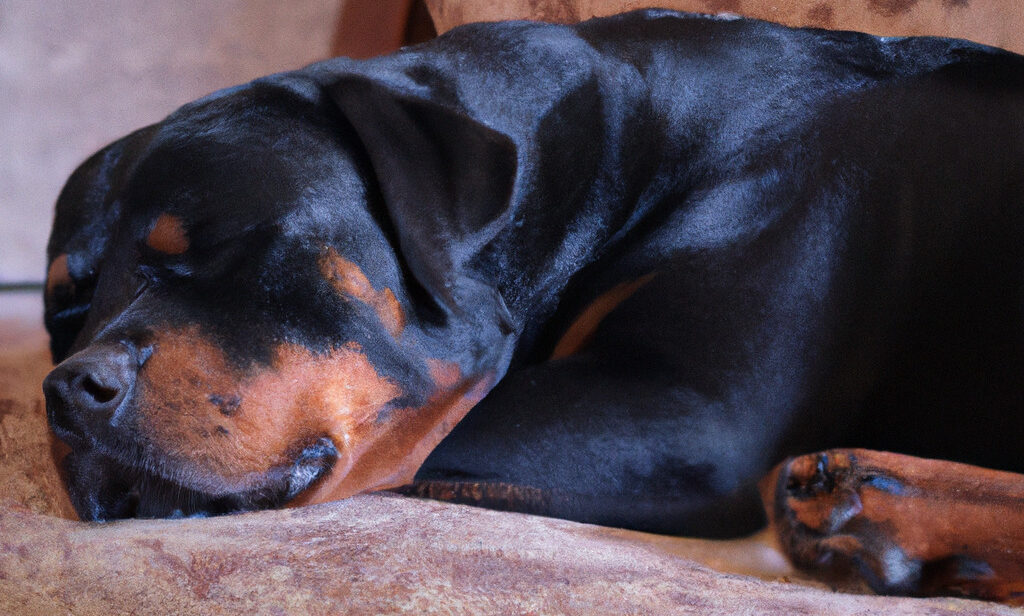Last Updated on April 15, 2025
Let’s be real—dogs lick everything. It’s how they say hello, clean themselves up, and figure out the world around them. But if your pup is licking nonstop—your hands, the couch, the floor, or even just the air—it can start to feel a little… much.
The truth is, while licking is usually normal, sometimes it’s your dog’s way of waving a red flag. It could be a sign of stress, boredom, or even something going on health-wise.
Let’s dig into what’s normal, what’s not, and when you should be concerned.

Normal Dog Licking: What’s Totally Fine
Most of the time, licking is no big deal. It’s a built-in behavior with a bunch of purposes. Dogs might lick to:
-
Groom themselves—especially their paws or behinds.
-
Show affection (licks = love).
-
Taste or explore something new.
-
Self-soothe, kind of like a toddler with a pacifier.
-
Get your attention—especially if you’ve laughed or reacted to it before.
Basically, if the licking is light, infrequent, and your dog stops when distracted? You’re probably in the clear.
When the Licking Gets Out of Hand

Now, if it’s constant—like your dog’s licking the same spot for hours or obsessing over random things like furniture legs or the walls—that’s different.
Here’s what could be going on:
1. Anxiety or Stress
Dogs sometimes turn to repetitive licking as a way to calm themselves. It might start after a stressful event—like you leaving for work, moving homes, or introducing a new baby or pet. Even boredom can trigger it.
Licking can actually release feel-good chemicals in the brain, so it becomes a habit. Kind of like a stress ball… but with more slobber.
You might also notice: pacing, whining, hiding, or licking the same object or body part over and over.
2. Medical Reasons
Not all licking is about feelings—sometimes it’s physical. If the behavior seems new, intense, or targeted, your dog might be trying to tell you something hurts.
Here are some common culprits:
-
Allergies (to food, grass, dust, etc.) – usually shows up in the paws and legs.
-
Nausea or GI issues – some dogs lick the floor or furniture when their stomach is upset.
-
Injury or pain – especially joints or areas they’ve hurt.
-
Skin infections – yeast or bacteria can make spots itchy and irresistible.
-
Dental issues – licking might be their way of dealing with mouth discomfort.
-
Age-related changes – older dogs may lick due to neurological conditions or cognitive decline.
🟠 Things to watch for: hair loss, raw or red skin, limping, vomiting, weird breath, or any sudden changes in behavior.
When Should You Call the Vet?
Here’s a good rule of thumb: if the licking is new, excessive, or focused on one area, it’s time to check in with your vet.
You’ll want to book an appointment if:
✅ The licking came out of nowhere
✅ Your dog can’t seem to stop licking one specific area
✅ You see redness, swelling, or signs of infection
✅ Your dog is acting differently overall
✅ You think allergies or stomach issues might be involved
Dogs are tough little creatures—they often hide pain until it becomes serious. It’s better to catch things early.
How to Help Your Dog Stop Licking (If It’s Not Medical)
If your vet gives your pup a clean bill of health, the next step is tackling the behavior itself. Here’s what can help:
🔹 Keep Their Brain and Body Busy
Boredom is one of the biggest triggers. Add extra walks, games, sniff time, or puzzle feeders to their routine. Rotate their toys regularly to keep things fresh and exciting.
🔹 Redirect the Behavior
The second you notice them start licking, interrupt it. Offer a toy, cue a simple command like “sit” or “leave it,” or get them moving.
🔹 Offer Something They Can Lick
Licking is soothing, so give them a healthy outlet. Try a lick mat with dog-safe peanut butter or plain yogurt. It’s calming, satisfies the urge, and keeps them out of trouble.
🔹 Support Their Emotional Needs
Routine helps anxious dogs feel more secure. You can also try:
-
Calming pheromone sprays or diffusers
-
Anxiety wraps
-
Music made for dogs
-
Training with a behaviorist or positive reinforcement trainer
🔹 Avoid Reinforcing the Behavior
Here’s the tricky part: even scolding can be rewarding if it gets your attention. Try to stay neutral when the licking starts, and praise or reward them when they’re calm or focused on something else.
Conclusion
Some dogs lick a little. Some dogs lick a lot. But if it starts to feel excessive—or just off—it’s worth paying attention.
Your dog could be stressed, bored, or dealing with a health issue. Whatever the case, you don’t have to figure it out alone. Your vet and a good trainer can help you decode what’s going on—and get your pup back to being happy, healthy, and (mostly) slobber-free.
 Dog N Treats All dogs deserve to be pampered
Dog N Treats All dogs deserve to be pampered



